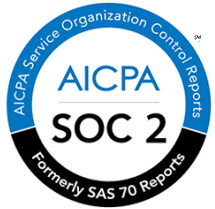Real-Time data integration with Change Data Capture (CDC): A comprehensive guide



The world is consuming and creating data faster than ever before. Global data volumes are expected to reach 200 zetabytes in 2025, Many businesses are turning to Change Data Capture (CDC) technology to support high-throughput, low-latency data pipelines and real-time analytics.
CDC tracks changes in databases and streams them in real time to data warehouses, data lakes or other systems, ensuring data pipelines are always up to date – without the heavy lifting of full refreshes – all while reducing latency and improving pipeline performance. Modern ETL pipelines and data architectures rely on CDC to efficiently update data.
Here we explore the key components of CDC architecture, best practices for implementation, and how CDC can power modern data pipelines to enable agility and scalability in data-driven environments.
Understanding change data capture: What is CDC?
CDC is a powerful approach for building real-time data pipelines, enabling you to track and capture changes – such as inserts, updates, and deletes – in a source database log systems like a write-ahead log (WAL) or bin log. By accessing these logs, you can replicate data, integrate it into other systems or trigger downstream processes with efficiency.
CDC reads directly from the logs. It captures changes in the exact order they occur, ensuring target systems stay in sync without placing additional load on the source database. This capability is especially valuable for large-scale systems, where querying the database for recent changes can be slow and resource intensive, and expensive. CDC reduces that overhead, making incremental updates fast and reliable.
For data engineers building real-time data pipelines, CDC is an essential tool. It reduces strain on critical systems, supports low-latency data processing and helps maintain up-to-date target systems – all while ensuring scalability as data volumes grow.
How CDC works: A real-world example
Let’s imagine a PostgreSQL database with millions of continuously updated records. If you need to update your data lake every minute with the latest changes, querying the database every 60 seconds would place a heavy load on it. The query would need to filter through the data, often using an ORDER BY clause with a timestamp column (updated_at) to identify changes. Such queries can take longer than a minute, defeating the purpose of real-time updates.
Here’s the catch: many engineering teams don’t include an updated_at column in their tables – only a created_at column. Without an easy way to track changes, querying for the most recent updates becomes almost impossible or inefficient, at best. Even if the column exists, querying a massive table repeatedly can overwhelm the database, slowing it down and affecting performance.
With CDC, the database logs every insert, update, or delete operation in a log file. Instead of querying the database directly, the system reading the data just pulls the log file. The database continues to run without interruption, and changes are made within seconds, not minutes.

Potential pitfalls in CDC implementation
While CDC offers significant benefits for real-time data processing, it’s not without its challenges. Proper planning and monitoring are critical to avoid common pitfalls that can impact performance, data integrity and security. Below are some key challenges to consider:
- Uncontrolled Log Growth: If no system is consuming the CDC data, log files can grow rapidly and consume excessive storage. In extreme cases, this can crash the database. Even with managed services like AWS Aurora, continuous monitoring is essential to prevent costly storage expansion and system failures.
- Handling Large Row Updates (TOAST in Postgres): In Postgres, large values are updated using The Oversized-Attribute Storage Technique (TOAST). When these values exceed a certain size, the CDC log may reference the update without including the full data. Processing these updates requires additional steps to retrieve and reconstruct the data, adding complexity and potentially slowing the pipeline.
- Schema Changes: Modifying the schema in certain ways – such as adding or altering columns – can break CDC pipelines or lead to incomplete data capture. Systems must be designed to detect schema changes and adjust automatically to maintain data consistency and avoid data loss.
- Network Latency and Bandwidth Issues: In distributed environments, high data volumes can overwhelm the pipeline. If logs aren’t processed quickly enough, they may accumulate faster than they can be consumed, leading to the existence of stale data downstream.
- Security Risks: CDC logs capture every change in the database – including sensitive information. Without proper encryption and access controls, you run the risk of unauthorized access to that sensitive data. Implementing the proper security protocols such as data encrypting (in transit and at rest) is vital to protect sensitive information.
When not to use CDC
Although rare – there are a few scenarios for which CDC is not a good option.
One exception might be if the volume of changes is so large and frequent that managing logs is more complex than querying the database directly. Still, optimizing CDC for parallel processing could be a solution and, in general, if you’re dealing with a database and need to consume data later for analytics or AI, CDC is highly recommended.
One of the biggest challenges with CDC today is its sequential nature: logs are written sequentially, which can limit the speed at which data can be processed. In the future, CDC systems may evolve to support parallel processing, reducing data retrieval times and enabling real-time data integration at scale.
7 best practices for implementing CDC in your data pipeline
Implementing CDC effectively requires careful planning and ongoing vigilance. Following these best practices will help you build a reliable and scalable CDC pipeline while minimizing potential issues and risk:
- Start with a solid schema design. Your tables should include critical columns such as updated_at to track changes. This will make it easier to identify and process updates, if needed. Even if you rely on CDC logs, having these columns can serve as an additional backup or validation layer.
- Monitor log growth and consumption. Regularly monitor your CDC logs to ensure they are being consumed by downstream systems. Unmonitored logs can grow rapidly, consuming storage and potentially crashing the database. Be sure to set up alerts and monitoring tools to track log size and subscriber activity.
- Use incremental updates. Design your pipeline to process data incrementally rather than performing full table scans or bulk updates. This ensures faster processing times, reduces system load and keeps your data pipeline efficient.
- Optimize for high-volume environments. In high-volume data environments, ensure your CDC system can handle large datasets without bottlenecks. Implement parallel processing where possible and monitor data transfer rates to avoid delays in real-time updates.
- Handle schema changes gracefully. Build your CDC pipeline to detect and adapt to schema changes automatically. This may involve setting up schema evolution tools or integrating with data governance systems to maintain data integrity.
- Prioritize data security and compliance. CDC logs may contain sensitive information, so be sure to implement strong access controls, column hashing, and encryption policies. Enforce compliance with data protection regulations such as GDPR or HIPAA, and monitor your pipeline for potential vulnerabilities.
- Test and validate regularly. Conduct regular tests to ensure data consistency and accuracy between your source and target systems. Automate validation processes to catch errors early, and verify that your CDC implementation is working as intended.
And, don’t forget to start early! Implementing CDC from the beginning will save time and prevent costly problems down the road.
CDC in modern data architectures
CDC integrates seamlessly with both open source and proprietary technologies like Apache Kafka, Apache Flink, Snowflake Streams and Debezium, which process data streams as they arrive. This enables real-time fraud detection, supply chain monitoring, dynamic pricing and personalized user experiences.
The critical role of Change Data Capture (CDC) in AI
As AI continues to evolve and permeate every industry, the need for real-time data becomes more crucial than ever. Below are some examples of how CDC plays a pivotal role in enabling AI systems to function at their best with access to up-to-date, accurate information, driving innovation across multiple domains:
- Real-Time AI Inference: AI models deployed in edge computing environments, such as IoT devices, self-driving cars and industrial sensors require low-latency data streams to make split-second decisions. CDC ensures that edge AI applications are always updated with the most recent information.
- AI-Powered Decision Engines: As businesses move toward fully autonomous decision-making, CDC will fuel AI with the latest context to make informed choices. This is crucial in many industries: for example, it will enable algorithmic trading in finance, real-time diagnostics for healthcare and predictive maintenance in manufacturing.
- Event-driven AI: Many AI-powered applications operate on an event-driven architecture, where decisions must be made immediately based on the latest available data. For example, AI assistants in smart homes must react instantly to user preferences or environmental changes, and real-time sensor data must be synched with AI-driven navigation systems for autonomous driving to be safe. CDC streams events into AI pipelines, reducing the time between data collection and actionable insights.
- Federated Learning: With data privacy regulations tightening, organizations are increasingly turning to federated learning, where AI models are trained across multiple devices without centralizing raw data. CDC allows local updates to be captured and shared in real time across distributed AI networks, all while preserving privacy.
When you're updating AI models or data lakes every minute, querying the production database repeatedly isn't scalable. In fact, it slows everything down. CDC solves that problem by allowing you to read changes directly from the log, ensuring sub-minute updates and keeping AI systems fast and responsive.
Transform changes into opportunities
CDC is essential for building scalable data pipelines, improving data consistency, and reducing latency. Organizations that leverage CDC can avoid t full data refreshes, enhance performance and stay competitive.
However, there are many CDC solutions to choose from. Some are optimized for specific databases like PostgreSQL, MySQL, or Oracle, while others offer broader compatibility but may require additional configuration. Choosing the right CDC tool depends on your database technology, data volume, processing requirements, and integration needs. Support for schema evolution, latency and fault tolerance, ease of integration and scalability are all critical considerations.
Matia provides developer-first solutions for building reliable, high-performance CDC pipelines in a unified platform.
Learn how Matia can help you streamline real-time data integration and stay ahead in today’s data-driven world.


.svg)





.png)









